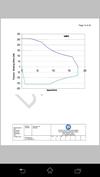Search Forum
Blog Entry# 1947761
Posted: Jul 31 2016 (21:16)
35 Responses
Last Response: Aug 03 2016 (22:28)
35 Responses
Last Response: Aug 03 2016 (22:28)
Gatiman Express (Nizamuddin / Agra Cant) is being hauled by Ghaziabad WAP5 locomotive. Why WAP7 which is more powerful is not used here?
34 Posts
Yes. But only in the higher speed ranges. Its TE drops to zero only at around 180 km/h.
Note : These TE ratings are the absolute values. WAP7 loco carries 45 tons more than WAP5 regardless of rake formation and its rolling resistance is considerably higher. So, a WAP7 loco literally carries an extra coach when compared to a WAP5 loco.
Note : These TE ratings are the absolute values. WAP7 loco carries 45 tons more than WAP5 regardless of rake formation and its rolling resistance is considerably higher. So, a WAP7 loco literally carries an extra coach when compared to a WAP5 loco.
yep, totally related to electric machines and electric drives ;)
when you go for v/f control, your motor has 3 'zones' of operation: Constant Torque region, Constant Power region and High speed region.
in Both P7 and P5's graph you'll see a flat region in the beginning. this is constant torque region, where we maintain v/f ratio constant, which means torque is also constant. As you must have guesses, as speed increases, frequency of rotation also increases and hence to keep v/f ration constant you have to increase input voltage to motor. However...
more...
when you go for v/f control, your motor has 3 'zones' of operation: Constant Torque region, Constant Power region and High speed region.
in Both P7 and P5's graph you'll see a flat region in the beginning. this is constant torque region, where we maintain v/f ratio constant, which means torque is also constant. As you must have guesses, as speed increases, frequency of rotation also increases and hence to keep v/f ration constant you have to increase input voltage to motor. However...
more...
One reason is the space constraints due to the new transformer, as mentioned in the other blogs. This was a problem at that time, because, even though transformer taps were provided, a converter still had to be installed in the locomotive to be able to connect to the transformer and supply the power to the rakes. Usually, the transformer tap+ converter combo is decided based on the maximum rake length ( i.e., maximum power drawn by the rake) that the loco has to handle. Since the passenger trains in India are usually much longer than their European counterparts, the original design was not sufficient to power the longer Indian rakes, and an upgrade was required. This was easy in the WAP7 as it was a longer loco than the WAP5 and had enough space.
...
more...
...
more...



